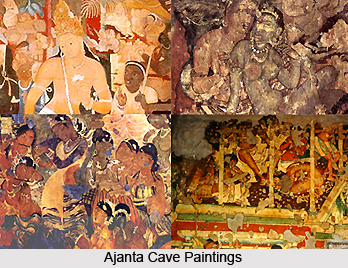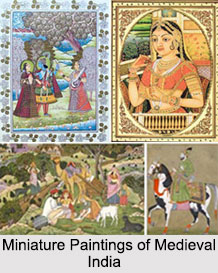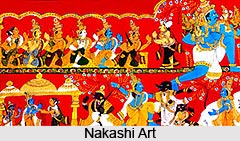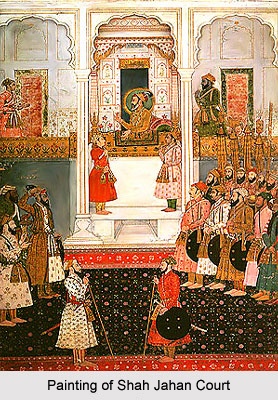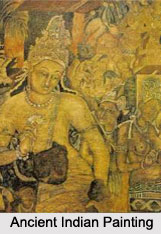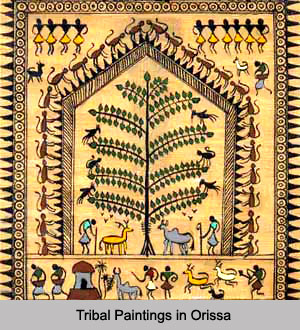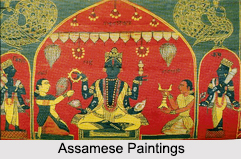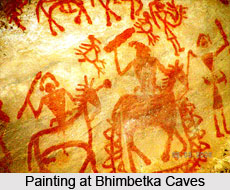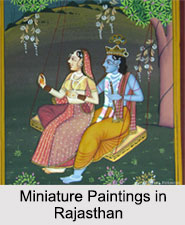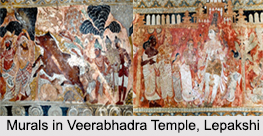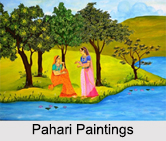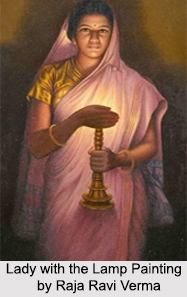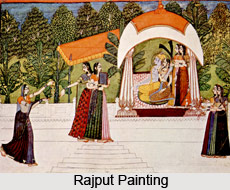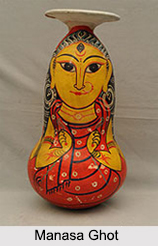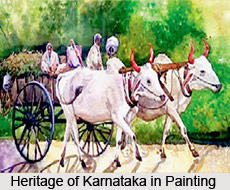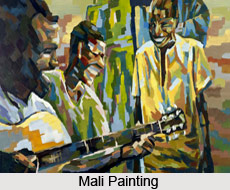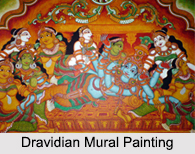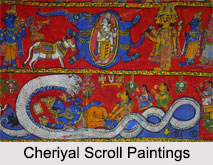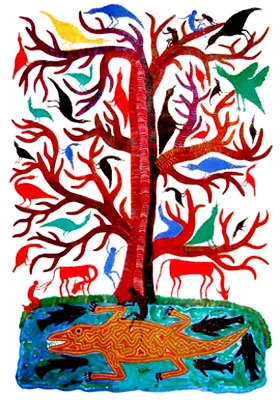 Pithora Paintings are colourful images on walls that are part of a ritual conducted to honour lord Pithora. This type of painting, which almost vanished but was eventually recouped, is usually practiced by the tribes of Rathwas, Bhilals and Naykas of Central Gujarat and Madhya Pradesh. The Pithora Paintings are found on the 3 inner walls of the houses in the villages of Tejgadh and Chhota Udaipur taluka of the district of Vadodara in Gujarat. The paintings contain dynamic figures and efficient utilisation of colours. Pithora Paintings is very significant in the lives of these tribes and the application of such paintings brings happiness, peace and prosperity. Pithora paintings are a medium that denotes auspicious occurrence which occurs in the community and family. The paintings depict vital occasions of the tribes such as weddings, childbirth, festivals etc.
Pithora Paintings are colourful images on walls that are part of a ritual conducted to honour lord Pithora. This type of painting, which almost vanished but was eventually recouped, is usually practiced by the tribes of Rathwas, Bhilals and Naykas of Central Gujarat and Madhya Pradesh. The Pithora Paintings are found on the 3 inner walls of the houses in the villages of Tejgadh and Chhota Udaipur taluka of the district of Vadodara in Gujarat. The paintings contain dynamic figures and efficient utilisation of colours. Pithora Paintings is very significant in the lives of these tribes and the application of such paintings brings happiness, peace and prosperity. Pithora paintings are a medium that denotes auspicious occurrence which occurs in the community and family. The paintings depict vital occasions of the tribes such as weddings, childbirth, festivals etc.
Artists of Pithora Paintings
Rathwas are the major tribes who perform the art of Pithora paintings. They are simple yet extremely religious people and consider their god, Pithora Baba, as the Supreme Being. The artists of Pithora paintings are known as Lakharas, who are mainly farmers. Where as Jhokhara are those who keep an account of the paintings. The priest who conducts the ritual is known as Badwa. Only the male members of the tribes practice the art form. Female member do not have permission to learn the paintings.
Ritual of Pithora Paintings
Pithora paintings are a ritual rather that just a painting. The ritual is conducted in order to express appreciation and gratitude Pithora Baba. The Badwa is called upon whenever there is any problem in a household such as sick children or cattle. The Badwa suggests a probable solution along with the painting of a Pithora. A Pithora is usually a 3-wall affair and is situated at the entrance, called Osari, inside the walls of the initial room or outside the first front wall. The painting is done through out the entire wall and 2 other walls on both sides of it. The walls are first plastered with 2 layers of cow dung and a layer of white chalk powder. The raw materials are arranged by unmarried girls in the tribe. The process is known as Lipna. The main wall, which is the largest, is considered sacred and paintings of legends of creation are made here. The 2 side walls contain figures of deities and ancestors.
Technique of Pithora Paintings
The spirit of a Pithora painting is enhanced by its earthiness and the execution of the painting contains the ethnicity of rustic India. The colour is obtained by mixing milk with powdered colour. This is then mixed with Mahuda, which is liquor made from Mahuda tree. But nowadays, fabric colours are used which are available locally. The major colours that are generally used are red, vermilion, orange, yellow, indigo, ultramarine, green, silver and black. The brush is created by thrashing the ends of a twig or bamboo stick.
Nowadays Pithora paintings are executed for commercial purposes also. But there are adequate changes made to the original painting format. But still Pithora paintings are scared artworks that are made for worship.
